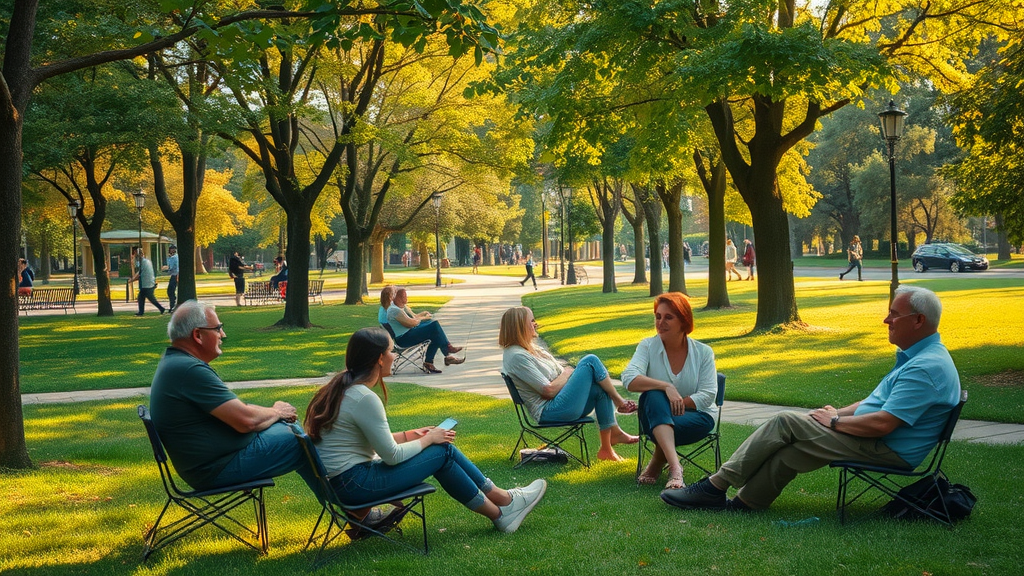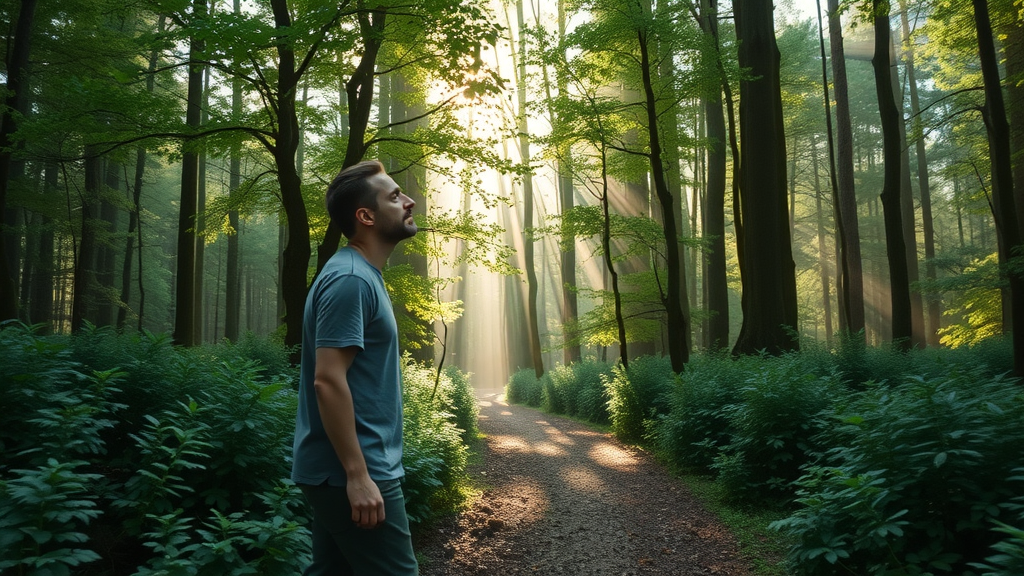Did you know that spending just 20 minutes in nature can significantly lower your stress levels? Explore the secret ways environmental psychology shapes your well-being—often without you realizing it.

What You’ll Learn
- The fundamental scope and impact of environmental psychology in daily life
- How experts use research and design to shape healthier environments
- The influence of natural and built environments on your mood and behavior
- Actionable tips to apply environmental psychology at home or work
- Career pathways in environmental psychology
- How the field helps address climate change and global challenges
Environmental Psychology Explained: Definitions, Scope, and Impact
Environmental psychology is the scientific study of how our surroundings—both natural and built—affect our thoughts, feelings, and actions. From city parks to cozy living rooms, the environments we inhabit shape our mental health, productivity, and overall well-being. Environmental psychology bridges the gap between how people behave and how places are designed, making it an essential field for anyone interested in personal development, urban planning, or interior design.
The core of environmental psychology explores critical questions such as: How does the environment affect your mood? What makes a public space inviting? Why does a stroll in the woods boost your creativity? Environmental psychologists work tirelessly to answer these questions by conducting research, experimenting with environmental design, and collaborating with architects, urban planners, and healthcare professionals. Whether it’s understanding the subtle power of color in schools or the impact of open spaces in office design, the field of environmental psychology delivers actionable knowledge that touches every aspect of our daily existence.
Context is key in environmental psychology—the natural environment (like parks and forests) and the built environment (like offices, schools, and urban centers) have distinct effects on human behavior . Understanding these differences allows us to design spaces that not only function well but also actively contribute to our happiness and health.
- What environmental psychology covers in everyday life
- How environmental psychologists use research
- The importance of context: natural environment vs. built environment
| Field | Focus | Typical Questions |
|---|---|---|
| Environmental Psychology | Human-environment relationship | How environments affect behavior? |
| Social Psychology | Interpersonal dynamics | How groups influence individuals? |
| Environmental Design | Physical settings | How to build spaces for optimal behavior? |
How Environmental Psychologists Shape Our World
Environmental psychologists don’t just study theories—they are hands-on problem solvers influencing the shape of our cities, homes, schools, and workplaces. By applying principles from the field of environmental psychology , these professionals design environments that improve productivity, boost mental health, and promote sustainability. Collaboration is at the heart of this work: environmental psychologists team up with architects, engineers, city planners, and policy makers to create built environments tailored for both function and psychological well-being.
Through extensive fieldwork and laboratory experiments, environmental psychologists gather data on how people respond to various environmental stimuli. Whether testing how office lighting affects mood or analyzing personal space needs on public transportation, their research directly informs new standards in environmental design and urban planning . This partnership between scientific study and practical application ensures that physical environments—from classrooms to hospitals—serve the people who use them most.
Professionals in this field are often required to have advanced degrees in psychology or related disciplines, with expertise in research methods, behavioral observation, and data analysis. Their evidence-based insights guide the transformation of public space, integrating aesthetic beauty with psychological safety and accessibility.
The Role of an Environmental Psychologist: Tools, Skills, and Research
- Qualifications and educational paths
- Fieldwork and laboratories
- Collaboration with architects and city planners
"As architects of behavior, environmental psychologists help design cities, schools, and workplaces to boost productivity and happiness."
Understanding The Natural Environment's Influence on Mind and Behavior

The natural environment has profound effects on our mental and emotional states. Environmental psychology research consistently shows that spending time in nature can enhance mood, lower stress, and improve cognitive abilities. When you walk through a lush forest, your mind has a chance to relax, restoring focus and helping you process emotions more effectively. The simple act of being outdoors allows you to reconnect with the natural world, which carries significant benefits for mental health and overall well-being.
Theories like the Biophilia Hypothesis suggest our affinity for nature is hardwired. Attention Restoration Theory proposes that natural environments help restore depleted mental resources, making us more productive and creative afterwards. Meanwhile, the Stress Recovery Theory reveals that natural settings can aid in physical and psychological recovery after stressful events. These scientific frameworks guide environmental psychologists in designing green spaces and public parks that offer real, measurable value to communities.
Whether it’s creating green roofs in urban areas, planting community gardens, or encouraging outdoor classrooms, environmental psychologists are reshaping how we integrate the natural environment into modern life. This practical application of research enhances not just our surroundings, but also our capacity for joy, focus, and resilience.
Key Theories in Environmental Psychology and Human-Nature Interaction
- Biophilia Hypothesis
- Attention Restoration Theory
- Stress Recovery Theory
Environmental Psychology and the Built Environment: Secret Design Principles Revealed
The built environment —think offices, schools, neighborhoods, and hospitals—is a powerful tool for shaping our daily experiences. Environmental psychology reveals that even subtle design choices can dramatically influence how we work, learn, heal, and connect. For example, flexible workspace layouts foster creativity by allowing people to move and interact more freely, while clear signage and logical layouts assist with wayfinding in complex public spaces.
Environmental psychologists examine how factors like lighting, acoustics, natural elements, and color schemes affect productivity, mood, and social interaction. Their findings inform urban planning, school redevelopment, and even hospital construction—improving recovery rates and staff well-being. Integrating plants, optimizing furniture arrangements for comfort and collaboration, and ensuring access to sunlight are all evidence-based strategies born from this field.
In neighborhoods, design principles encourage walkability and positive social behaviors, leading to safer, more connected communities. Ultimately, environmental psychology blends function and aesthetics, proving that beautifully designed built environments do much more than please the eye—they shape behavior, attitudes, and community health.
Environmental Design and Its Psychology: Building Spaces That Work
- How workspace layout increases creativity
- The psychology of neighborhoods
- Hospitals, schools, and wayfinding

Applying Environmental Psychology to Daily Life: Easy and Actionable Tips
You don’t need to be a professional to harness the benefits of environmental psychology . By tweaking your immediate surroundings, you can boost focus, ease anxiety, and spark new ideas. Small shifts—like adding houseplants, maximizing natural light, or changing wall colors—can deliver surprising benefits to your well-being and productivity.
Think about arranging your home office to limit distractions, or encouraging families to eat together in spaces designed for comfort and connection. Even the way you lay out your living room can make conversations flow more easily while supporting everyone’s need for personal space. Environmental design isn’t just for specialists; its principles are everyday tools for a better life.
Start simple. Whether you live in a city apartment or a sprawling house, applying environmental psychology can mean the difference between thriving and simply getting by. Try one or two changes from the list below and notice the difference it makes.
- Redesign your home office for focus
- Add greenery to reduce anxiety
- Use natural lighting to improve mood
- Arrange furniture for better communication
- Choose colors that enhance creativity
Environmental Psychology and Climate Change: Transforming Perceptions and Actions
Climate change is one of today’s greatest challenges, but its solution isn’t just about technology or policy—it’s also about changing human behavior. Environmental psychologists provide crucial insight into how people perceive environmental issues and what motivates them to act. By understanding the psychological barriers to sustainable choices, experts can design interventions that encourage energy conservation, recycling, and other climate-friendly habits.
The field leverages principles like risk communication, highlighting local impacts to make the dangers of climate change feel more immediate and actionable. Overcoming “psychological distance” is critical—when people see climate change as a distant threat, they’re less likely to change their actions. Environmental psychology shows how relatable narratives, vivid images, and accessible solutions prompt individuals and communities to invest in a healthier, more resilient future.
Whether it’s helping cities design “cool zones” to counter heat waves or fostering a sense of community identity around natural resource protection, environmental psychologists are changing how we address climate change on both global and personal levels.
How Environmental Psychologists Help Shift Climate Change Behaviors
- Risk communication strategies
- Motivation for sustainable choices
- Overcoming psychological distance

Research Frontiers: Insights from the Journal of Environmental Psychology
The Journal of Environmental Psychology is a leading resource showcasing the latest research on how surroundings affect human behavior. Current studies investigate everything from the mental health impact of urban green spaces to how evidence-based design is transforming hospitals and schools. Recent trends in the journal point toward immersive technologies, the role of AI in smart environments, and community-driven design for resilience to disasters.
Notable studies highlight the importance of blending city life with nature, showing that parks, gardens, and even naturalistic building materials can foster healthier communities and reduce crime. Researchers are also exploring questions like: How do shared public spaces shape group identity? Which environments reduce stress and enhance learning the most?
Cutting-edge research in the field of environmental psychology advances our understanding and keeps practitioners at the leading edge of sustainable, evidence-based design.
- Notable studies on cities and nature
- Trends in evidence-based design
- Emerging research questions
Journal of Environmental Psychology: How to Access and Use Academic Resources
Accessing reliable findings from the Journal of Environmental Psychology and related publications enhances both professional practice and everyday decision-making. Most academic journals are available through university libraries, online research databases, or by subscription. Sites like ScienceDirect, JSTOR, and ResearchGate offer access to thousands of peer-reviewed articles covering everything from conservation psychology to urban planning.
To make sense of academic findings, start by reading abstracts and executive summaries, which condense complex research into key insights. Environmental psychologists and design professionals often translate these studies into actionable recommendations that anyone can use to improve spaces at home, work, or in the community.
Use research to verify claims you find online, inspire new projects, or advocate for changes in your own environment. By grounding your decisions in evidence from the field of environmental psychology , you increase the impact of your efforts and contribute to healthier, happier communities.
- Top journals and databases
- Making sense of academic findings
- How to use research in practice
Paths to Becoming an Environmental Psychologist
- Educational requirements
- Gaining practical experience
- Certification and licensing
- Job prospects in government, academia, and consulting

The pathway to a career as an environmental psychologist typically starts with a bachelor’s degree in psychology or a closely related field. Graduate studies specializing in environmental psychology, human-environment interaction, or urban studies are next. In most regions, certification and licensing are required for practitioners working in healthcare, research, or consultancy roles.
Practical experience is essential—internships in urban planning, public health, or design firms give students hands-on exposure to real-world projects. Many environmental psychologists find work with government agencies shaping policy, non-profits focused on sustainability, consulting firms offering design guidance, or academic institutions researching the evolving relationship between human behavior and the environment.
As interest in sustainability and well-being grows, the demand for experts in the field of environmental psychology continues to rise—making now an ideal time to join this impactful profession.
Case Studies: Real-World Examples of Environmental Psychology
- Urban park redesigns lowering crime
- Office lighting retrofits boosting morale
- Schoolyard naturalization enhancing focus

In cities worldwide, public spaces redesigned with environmental psychology principles report dramatic results. For example, urban parks that added native plants and walking paths saw reduced crime and greater public engagement. In offices, switching to natural light sources and biophilic design elements like indoor plants increased employee morale and creativity.
Schoolyards transformed from concrete expanses into naturalized play areas not only boosted students’ focus but also fostered social cooperation and reduced disciplinary incidents. These real-life examples underscore the practical power of environmental psychology, confirming that smart design is more than aesthetics—it’s about nurturing healthy, thriving communities.
Across all sectors, these projects show that when the physical environment affects mental health and behavior, it's possible to leverage that effect for sustained, positive change.
Challenges and Controversies in Environmental Psychology
- Balancing aesthetics and function
- Ethical concerns
- Cultural and accessibility considerations
Despite its transformative potential, the field of environmental psychology grapples with ongoing challenges. Balancing beautiful design with practical function can test even the most experienced professionals. Ethical issues—like how much personal data to collect during behavior studies or how to ensure privacy in public research—must be addressed with transparency and integrity.
Cultural diversity plays a crucial role as well. What works in one community may feel alien or inaccessible in another. Environmental psychologists strive to ensure designs are inclusive, emphasizing accessibility for all, regardless of age, ability, or background. These considerations drive innovation and keep the field honest and responsive to evolving societal needs.
Recognizing and addressing these controversies ensures that environmental psychology research continues to have a positive influence, making communities more vibrant and equitable.
People Also Ask: Essential Environmental Psychology Questions
What does environmental psychology do?
- Environmental psychology investigates how people are influenced by their environment and how they, in turn, influence their surroundings—optimizing the health and functionality of both.
What is an example of environment psychology?
- A well-known example: the design of green roofs in cities to reduce heat and improve air quality while providing spaces for relaxation and community.
What are the three types of environmental psychology?
- The main types are natural environment psychology (how nature impacts the mind), built environment psychology (how buildings and cities influence us), and social environmental psychology (group behavior in public spaces).
How long does it take to become an environmental psychologist?
- Typically, it takes 6–8 years, including a bachelor's degree, graduate studies (master's or PhD), and practical experience or licensure, depending on your region and specialty.
The Future of Environmental Psychology: Key Trends to Watch
- AI and smart environments
- Climate resilience and disaster design
- Global policy integration
Looking forward, the field of environmental psychology is embracing technology and global challenges. Artificial intelligence and smart home automation are making environments more adaptive and personalized. Designing for climate resilience—anticipating disasters and protecting vulnerable communities—is a fast-growing specialty. Increased attention to global policy means environmental psychologists will have a larger role in shaping healthy, sustainable societies worldwide.
These trends promise more human-centered solutions, stronger community bonds, and a new era in how we think about the relationship between people and their surroundings.
Whether you’re an individual aiming to improve your mental health or a professional involved in the design of public space, keeping up with these advances will give you a powerful edge.
Frequently Asked Questions on Environmental Psychology
- What areas do environmental psychologists specialize in?
- How can I use environmental psychology at work?
- What are top resources for research and learning?
- Can design companies hire environmental psychologists?
Environmental psychologists specialize in research, evidence-based design, policy consulting, and education. At work, you can apply their findings by optimizing office layouts, introducing greenery, or improving wayfinding to boost team productivity and well-being. Top resources include the Journal of Environmental Psychology, online courses, and community workshops. Yes, design companies regularly hire these specialists to ensure their projects meet both functional and psychological needs.
Key Insights for Leveraging Environmental Psychology Today
- Prioritize green space access
- Collaborate with environmental psychologists on projects
- Apply research findings to everyday environments
The secret to using environmental psychology effectively lies in taking small, evidence-backed steps. Start by adding green space where you live or work, team up with mental health and design professionals, and stay current with research to keep your spaces resilient and inviting.
Unlock the Power of Environmental Psychology Now
Ready to transform your surroundings and your life? Discover proven environmental psychology insights for your next home, office, or community project.
Identify one area in your life that could benefit from better design. Apply an environmental psychology principle today—add plants, rearrange for natural light, or consult an expert—and watch your well-being thrive.
 Add Row
Add Row  Add
Add 




Write A Comment